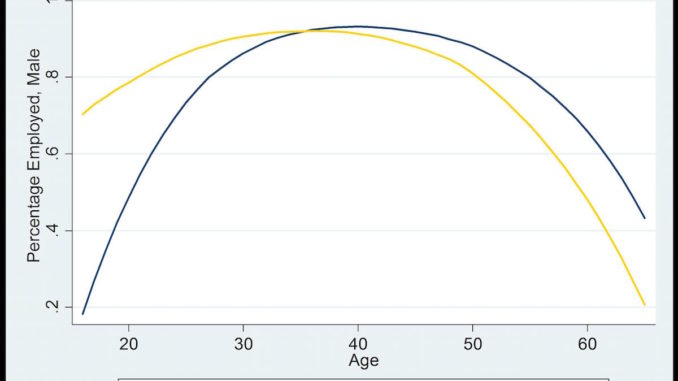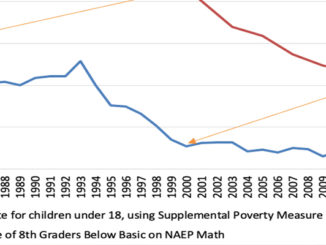
The nagging problem of significant numbers of youth leaving school unprepared for career employment has revitalized interest in vocational education, particularly apprenticeships. Support for vocational education comes from people across the political spectrum, from both labor and business groups, and from the popular media. The clearest manifestation in policy is President Trump’s executive order that calls for immediate expansion of existing apprenticeship programs while simultaneously disparaging the effectiveness of current education and training programs.
Recent evidence, however, suggests caution. In a knowledge-based economy, early employment gains with vocational training may lead to later problems when specific skills become obsolete and workers lack the ability to adjust to a changed economic environment.
Adapting to changed conditions is exactly the theme of much recent discussion about formerly middle-class jobs disappearing to technological advance. This situation will only be alleviated by building a strong educational foundation that provides workers with the ability to adapt as demands change. We should not think that expanded apprenticeships will provide this foundation. More likely they will reproduce the current skill mismatch for future generations.
Vocational/Apprentice Programs
While some countries, particularly in Europe, stress vocational education that develops specific job-related skills, others, like the US, emphasize general education that provides students with broad knowledge and basic skills. In assessing these alternatives, virtually all discussion of vocational education emphasizes its potential advantages in easing entry into the labor market by youth (with surprisingly mixed evidence).
But there is also the other end of the market. If people receive skills that are finely tuned to current employment opportunities, they might not be particularly prepared to adjust to new technologies. Thus, with higher growth rates and faster technological and structural change, people with vocational training may be more likely to be out of the labor market later in the life cycle.
In recent research with Guido Schwerdt and Lei Zhang, we turn to international comparisons to test the proposition that the life-cycle impact of vocational education might be quite different from that observed at entry into the labor market. We rely first on data on labor-market experiences of people at different ages and in different countries collected in the mid-1990s as part of an OECD-sponsored venture. The International Adult Literacy Survey (IALS) provides survey data for 18 countries, with information on some 15,000 workers between the ages of 16 and 65. This permits us to compare the life-cycle employment patterns of people with different educational backgrounds.
Our general strategy is to compare, within each country, the relative employment rates of old and young people with general education to those for people with vocational education. A key element of this “difference-in-differences” approach is confirming that today’s old people provide a good proxy for what today’s youth will look like in a few decades. For this, the IALS data are particularly useful because we have individual assessments of mathematics and reading skills that are valued in the labor markets, along with a variety of family background factors that might influence educational paths of students. We also know how the overall reliance on general and vocational education in a country has changed over time. Among other things, the data allow us to match each individual with vocational education to an individual with general education who is observationally comparable in terms of tested skills, family background, age, and years of education.
Over Life Cycle, Initial Advantage Turns into Disadvantage
We find clear evidence that the initial labor-market advantage of vocational relative to general education decreases with age. There is a trade-off between short-term benefits and long-term costs of vocational education. The skills generated by vocational education appear to facilitate the transition into the labor market but later on become obsolete at a faster rate.
Education Type and Male Life-Cycle Employment
Source: Hanushek, Schwerdt, Woessmann, and Zhang (2017)
Across our sampled countries, employment rates are higher for youth with vocational education, but this turns around by the age of 50. The employment patterns are most pronounced in the “apprenticeship countries” with combined school and work-based education programs (Denmark, Germany, and Switzerland in our data) and least noticeable in the countries with no formal system of vocational education such as the United States. The figure displays the employment patterns for the three “apprenticeship countries,” and the lower employment at older ages is very apparent.
Is the advantage of the early employment sufficient to make up for the later period of less employment for those with vocational education? An overall answer comes from comparing the life-time earnings of those with vocational and general education. When we calculate present values of earnings (discounted at 3%) for a young person, we find that lifetime earnings in vocational education are larger in Switzerland, but lower in Denmark and Germany. Interestingly, Denmark and Germany had noticeably higher growth rates of their economies over the past decades compared to Switzerland. This comparison is consistent with the idea that those with general education are more adaptable to changed economic demands.
Supporting Evidence
This general finding is reinforced by several complementary investigations. Three additional sets of analyses strengthen the interpretation that the distinct age pattern reflects depreciated skills rather than other forces inducing retirement. First, using data from the German Microcensus, we show that the same pattern holds in much larger and more recent samples and in estimation within occupational groups that excludes occupations where brawn is important. This latter estimation indicates that the differential movement out of employment is not simply a matter of physical wear and tear of people in specific vocationally intensive occupations.
Second, using Austrian Social Security data, we show that after a plant closure, the relative employment rates of displaced blue-collar workers (with more vocational training) are above those of white-collar workers at younger ages, but below them at ages above 50. The exogenous nature of the employment shock removes concerns about unobserved retirement preferences that could threaten identification.
Third, the analysis of the IALS data for the 1990s is reproduced in Woessmann’s recent work with Franziska Hampf for the 2011-12 period using the parallel data of some 29,000 adults from the Programme for the International Assessment of Adult Competencies (PIAAC). The same employment pattern with vocational and apprenticeship training is found for the recent period – despite the fact that several countries have enacted labor-market and pension reforms that have made early retirement more difficult in the meantime.
The decrease in the relative labor-market advantage of vocational education with age is apparent not only in employment, but also in income. One reason underlying the estimated labor-market patterns in the apprenticeship countries seems to be adult training. With increasing age, individuals with general education are more likely to receive career-related training relative to those with vocational education.
In sum, in dynamic economies, policy needs to consider the full life cycle.
More on Adapting to Change
Our estimates of the impact of vocational education on age-employment profiles indicate that much of the policy discussion about education programs is too narrow. Vocational education has been promoted largely as a way of improving the transition from schooling to work, but it also appears to reduce the adaptability of workers to technological and structural change in the economy. As a result, the advantages of vocational training in smoothing entry into the labor market have to be set against disadvantages later in life, disadvantages that are likely to be more severe as we move more into being a knowledge economy.
The key to understanding these results and to thinking more broadly about education policy is to recognize the importance of adaptation to changing economic conditions. Strong general education promotes greater cognitive skills that pay off in dealing with new economic processes (as seen in our recent paper with Guido Schwerdt and Simon Wiederhold). Importantly, the return to skills in the U.S. (or conversely the penalty for lack of skills) is greater than found in almost all developed countries.
Recent U.S. proposals for expanding apprenticeships by the Trump administration portray this as a way for compensating for the failure of U.S. K-12 education, but this is likely to make the long-run skill problems worse. One of the most significant labor-market problems facing the U.S. today is the number of workers whose middle-class jobs are slipping away and who are not prepared to adjust to a rapidly moving labor market. We are struggling to find ways of dealing with that problem. The caution here is that we should not lock in this situation for the future by failing to provide basic skills to the next generation. We should not delude ourselves into thinking that we can easily bring in apprenticeships to substitute for failing K-12 schooling.
Eric A. Hanushek is a senior fellow, Hoover Institution, Stanford University. Ludger Woessmann is Director, info Center for the Economics of Education and Professor of Economics, University of Munich.




